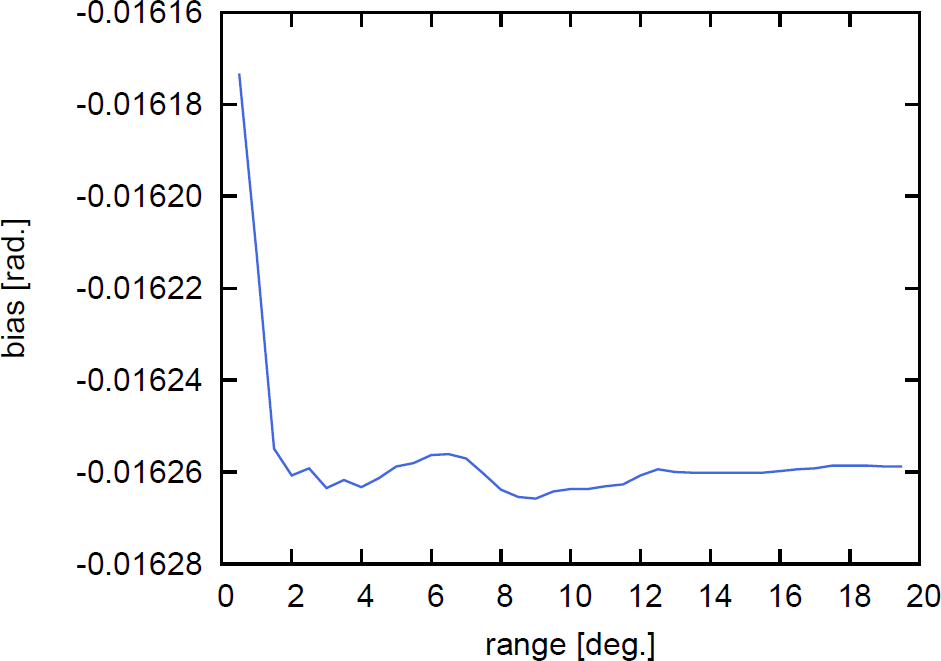Requirement analysis for LiteBIRD's optical system
JAXA Supercomputer System Annual Report February 2021-January 2022
Report Number: R21EDU20199
Subject Category: Space and Astronautical Science
- Responsible Representative: Toru Yamada, Director, Institute of Space and Astronautical Science, Department of Space Astronomy and Astrophysics
- Contact Information: Ryo Nagata(nagata.ryo@jaxa.jp)
- Members: Ryo Nagata
Abstract
LiteBIRD is a science satellite project being prepared as the second ISAS strategic large mission. It is on track to launch in late 2020s. We plan to make a full-sky map of the microwave background polarization by scan observation at millimeter wavelengths. By extracting odd-parity components from the polarization map, we expect to detect a signal of the primordial gravitational wave background which comes from cosmic inflation in the early universe. Compared with the signal originating from the primordial density fluctuations, the signal from the primordial gravitational waves is expected to be much fainter. Therefore, it is an urgent task to clarify instrumental characteristics and their associated systematic errors.
In 2021, we made a progress in a study of beam sidelobe effects in which we investigated how measurement of telescope polarization properties is affected in presence of beam sidelobes. Adopting a latest simulation model of the low frequency telescope (LFT), we identified biases from its main beam, near sidelobes, and far sidelobes in measured polarization angles. By subsequent end-to-end simulations of beam convolution, we found that those bias components actually lead to systematic error levels corresponding to their respective bias amplitudes. Besides to the above study, we made a couple of updates in studies once achieved such as evaluation of systematics mitigation from a new scan pattern and analysis of solar separation-angle dependence on focal plane locations.
Reference URL
Please refer to 'LiteBIRD: Lite (Light) satellite for the studies of B-mode polarization and Inflation from cosmic background Radiation Detection.'.
Reasons and benefits of using JAXA Supercomputer System
LiteBIRD is a project to make a full-sky map of the microwave background polarization by scan observation. In this research, we perform an entire suite of data analysis simulations from numerically generating time ordered data to map reconstruction. Mock data samples, to each of which an integration operation for polarized beam convolution is applied, are generated at 19 Hz for three years in the simulations. Beam functions are evaluated on several million grid points at every sampling occasion. Since repeating a coordinate transformation for mapping polarization properties to points on the celestial sphere requires much computational complexity, we need a highly integrated computing resource. Outcomes of this research are being counted as bases of optics design in the LiteBIRD project which is the second ISAS strategic large mission.
Achievements of the Year
We introduced beam patterns based on a latest LFT optics simulation to our study. Numerically reproducing a measurement experiment of polarization properties, we evaluated dependence of angle bias on a radial interval of the beam patterns. (Fig.1) shows the dependence for a 35 GHz beam pattern at a focal plane edge. There exists an angle bias of 1 degree in the main beam domain and its subsequent near sidelobes give an additional 0.3 arcminute bias. On the other hand, the far sidelobes make only no significant contributions because of their rapidly decreasing beam amplitude. We performed convolution simulations of the polarized beam pattern and found that a systematic error coming from the near sidelobes is equivalent to that from angle bias of 0.3 arcminute, which verifies validity of angle calibration by angle measurement up to several degrees.
Besides to the above study, we investigated systematics mitigation by use of our latest scan pattern and found that some of systematic errors are actually reduced. Also, we evaluated dependence of a separation angle between Sun and telescope pointing directions on a detector location on the focal plane, which initiated our study of sun light leakage to the telescope.

Fig.1: Dependence of angle bias on a radial interval of a 35 GHz beam pattern at a LFT focal plane edge
Publications
- Web
https://litebird.isas.jaxa.jp/static/eng/
Usage of JSS
Computational Information
- Process Parallelization Methods: MPI
- Thread Parallelization Methods: OpenMP
- Number of Processes: 24
- Elapsed Time per Case: 3 Hour(s)
JSS3 Resources Used
Fraction of Usage in Total Resources*1(%): 0.03
Details
Please refer to System Configuration of JSS3 for the system configuration and major specifications of JSS3.
| System Name | CPU Resources Used(Core x Hours) | Fraction of Usage*2(%) |
|---|---|---|
| TOKI-SORA | 698672.48 | 0.03 |
| TOKI-ST | 63.21 | 0.00 |
| TOKI-GP | 0.00 | 0.00 |
| TOKI-XM | 0.00 | 0.00 |
| TOKI-LM | 0.00 | 0.00 |
| TOKI-TST | 0.00 | 0.00 |
| TOKI-TGP | 0.00 | 0.00 |
| TOKI-TLM | 0.00 | 0.00 |
| File System Name | Storage Assigned(GiB) | Fraction of Usage*2(%) |
|---|---|---|
| /home | 3.33 | 0.00 |
| /data and /data2 | 666.67 | 0.01 |
| /ssd | 33.33 | 0.01 |
| Archiver Name | Storage Used(TiB) | Fraction of Usage*2(%) |
|---|---|---|
| J-SPACE | 0.09 | 0.00 |
*1: Fraction of Usage in Total Resources: Weighted average of three resource types (Computing, File System, and Archiver).
*2: Fraction of Usage:Percentage of usage relative to each resource used in one year.
ISV Software Licenses Used
| ISV Software Licenses Used(Hours) | Fraction of Usage*2(%) | |
|---|---|---|
| ISV Software Licenses(Total) | 0.00 | 0.00 |
*2: Fraction of Usage:Percentage of usage relative to each resource used in one year.
JAXA Supercomputer System Annual Report February 2021-January 2022


